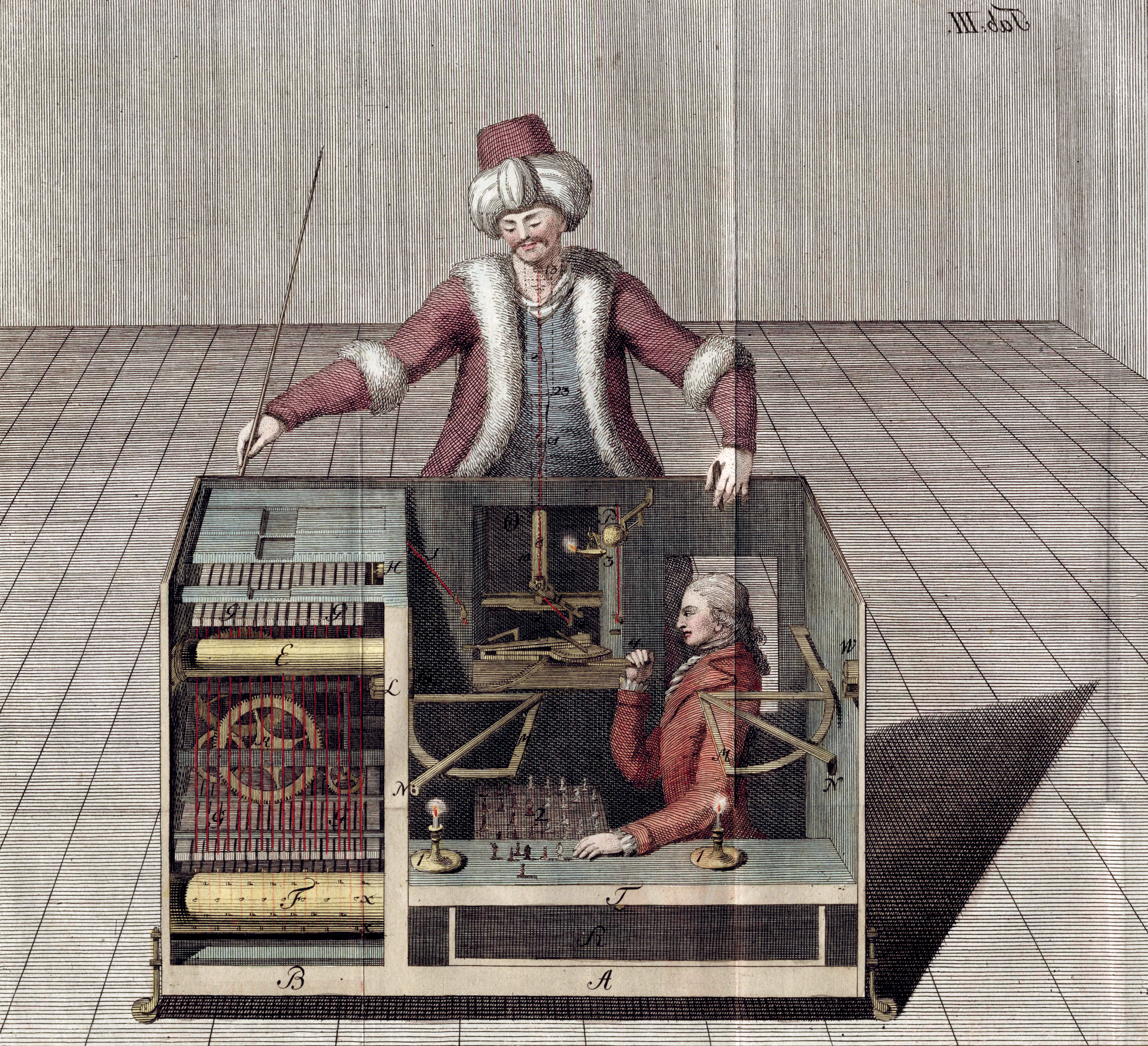
In the late 18th century, a fabulous new scientific oddity was the toast of Europe.
The Turk, a chess-playing automaton built by
Wolfgang von Kempelen, was defeating chess masters across Europe. It was a true marvel of the times — a machine, built after the fashion of a Turkish ruler, that was capable of thought. Built for the amusement of Empress Maria Theresa of Hungary, it played chess, the game of kings, against rulers and commoners alike. In 1808, it played its most famous foe, Napoleon Bonaparte. The Turk was eventually retired, sold, and was destroyed in a fire at Peale’s Chinese Museum in Philadelphia in 1854. But what was the secret behind this machine that dazzled royalty and astounded the court machinicians? Robert Lohr devises a tale for The Turk full of intrigue and heartbreak in his novel,
The Chess Machine.
Obviously, The Turk was a fraud. When von Kempelen decided to build his marvel (after a promise to Empress Maria Theresa to astound her), he had to find a way to direct the actions of the automaton. In his 1789 book, Overview and illustration of Mr Kempelen’s chess playing machine, Joseph Racknitz claims to have worked out the secrets, and there is plenty of material online to illustrate how a man could have stowed away in the Turk’s machinery and operated the chess-player’s arm.

But what sort of man would agree to part of such an elaborate farce? In Lohr’s novel, that man is a desperate dwarf, Tibor Scardanelli, who is at first hired — and later blackmailed — by von Kempelen, to provide the chess-playing genius, the ghost in his machine.
It’s a story full of court intrigue and human heartbreak. Tibor, the dwarf, was driven away from his family at just 14 years of age. He spends a number of years at a monastary, where he learns to play chess and exhibits a particular genius for it. After being made a scapegoat and driven away from the monastary, he makes a living as he can, often playing chess for small stakes in taverns and inns. As he is devising his machine, von Kempelen recalls seeing the dwarf play and seeks him out to offer him a very special commission.
Imperial courts are full of gossip and back-stabbing. Wolfgang von Kempelen’s fame comes at the expense of the Court Mechanician, Friedrich Knaus. Knaus will do anything to expose the fraud, including sending a lovely young courtesean to seduce von Kempelen or his assistant by posing as a housemaid. When a noblewoman (formerly von Kempelen’s mistress) dies under suspicious circumstances, many people whisper that it is The Turk who committed the crime.
Tibor, for all his faults, is at heart a very good man. He feels tremendous guilt for his past sins and for The Turk’s involvement in the noblewoman’s death. von Kempelen uses that guilt to blackmail and threaten Tibor, forcing him to spend most of his waking hours locked inside a small chamber inside the automaton. He is unable to leave von Kempelen’s house, for fear that someone will see him and connect him to von Kempelen. His only friends are Jakob, von Kempelen’s assistant, and Elise, the maid/courtesean. He is forced into a power play that cannot end happily for anyone involved.
Of course, there is no way to know if the first “brain” inside The Turk was a dwarf, but the story is compelling and full of wonderful historical detail. When I read historical fiction, I want to be swept up in the story and completely forget that I am actually getting a history lesson. This book succeeded admirably.
The Chess Machine by Robert Lohr is available now from Amazon.com.
is available now from Amazon.com.

is available now from Amazon.com.


